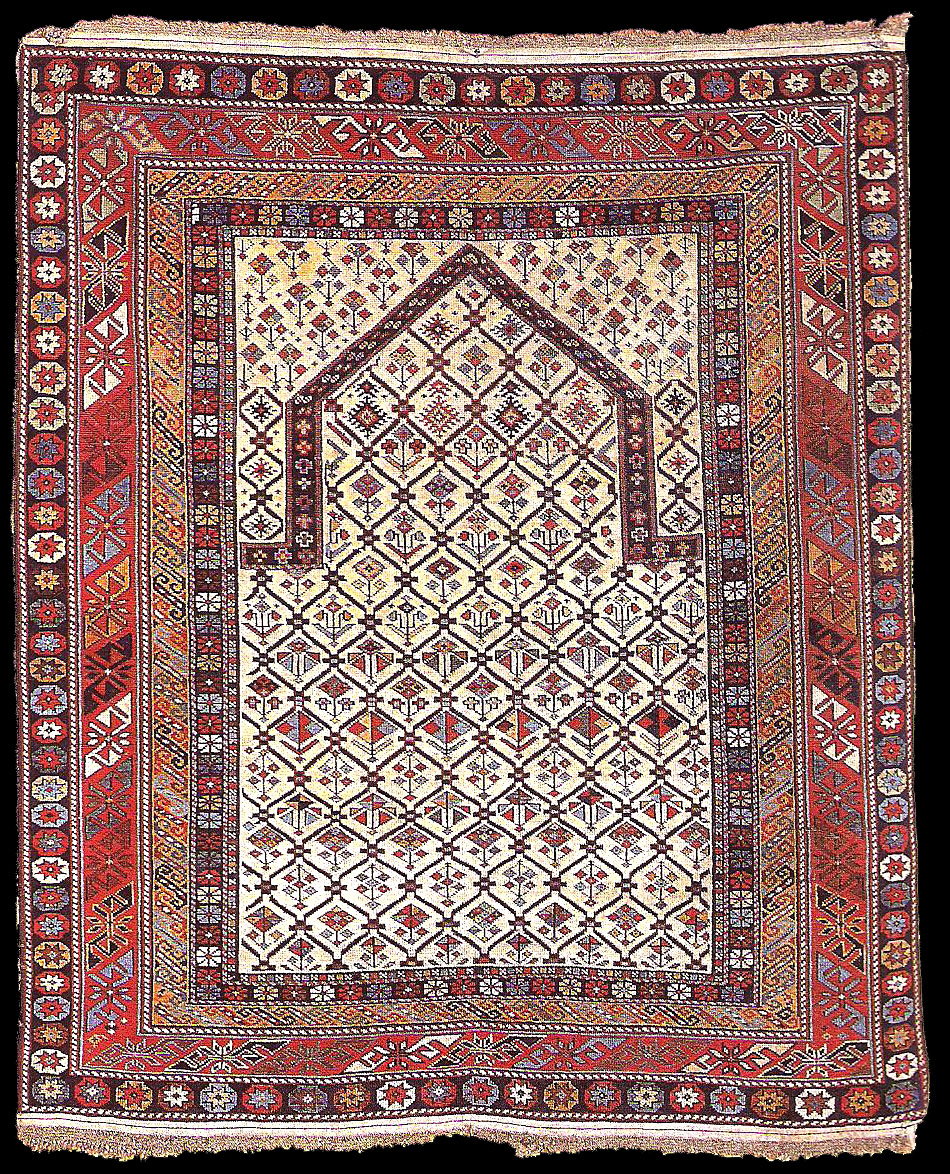|
This rug and three others form a very small, distinct sub-group among the
numerous examples of northeastern Caucasian ivory-ground prayer rugs. The
four rugs share so many characteristics that they must be closely connected,
possibly as the products of one workshop. The general layout of this rug,
with its wide, crisply drawn prayer arch, is common to all; they also share
an identical main border of dragon 's' forms framed by two minor borders
containing 'Solomon' (eight-pointed stars enclosed by octagons. Although the
flora varies, all four feature unusual fringed diamonds in the field, seen
here in the third row down from the apex of the arch. Two of the rugs (this
example included) have an added border of stylized "S" forms on a golden
ground.
The example published by Herrmann (Kaukasische Teppichkunst, plate 12} has
been attributed to Kuba, while the others are assigned to Shirvan or
Daghestan. The ends of Herrmann's and the pre sent piece consist of fine
white kilims finished in macramé-like multi-knotted warp fringe, a feature
of both Kuba and Daghestan rugs.
published Ralph Kaffel's Caucasian Prayer Rugs, plate 62
lit: published Ralph Kaffel's Caucasian Prayer Rugs, plate 62
 |

